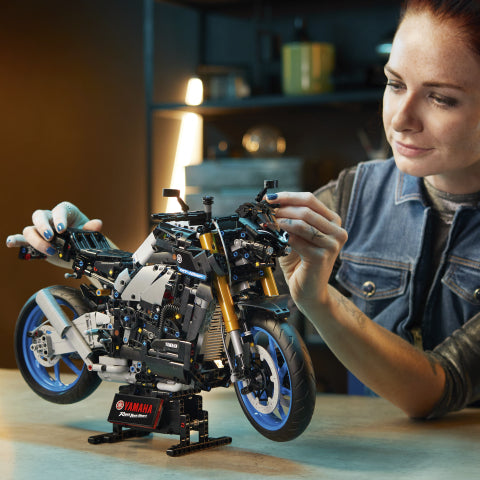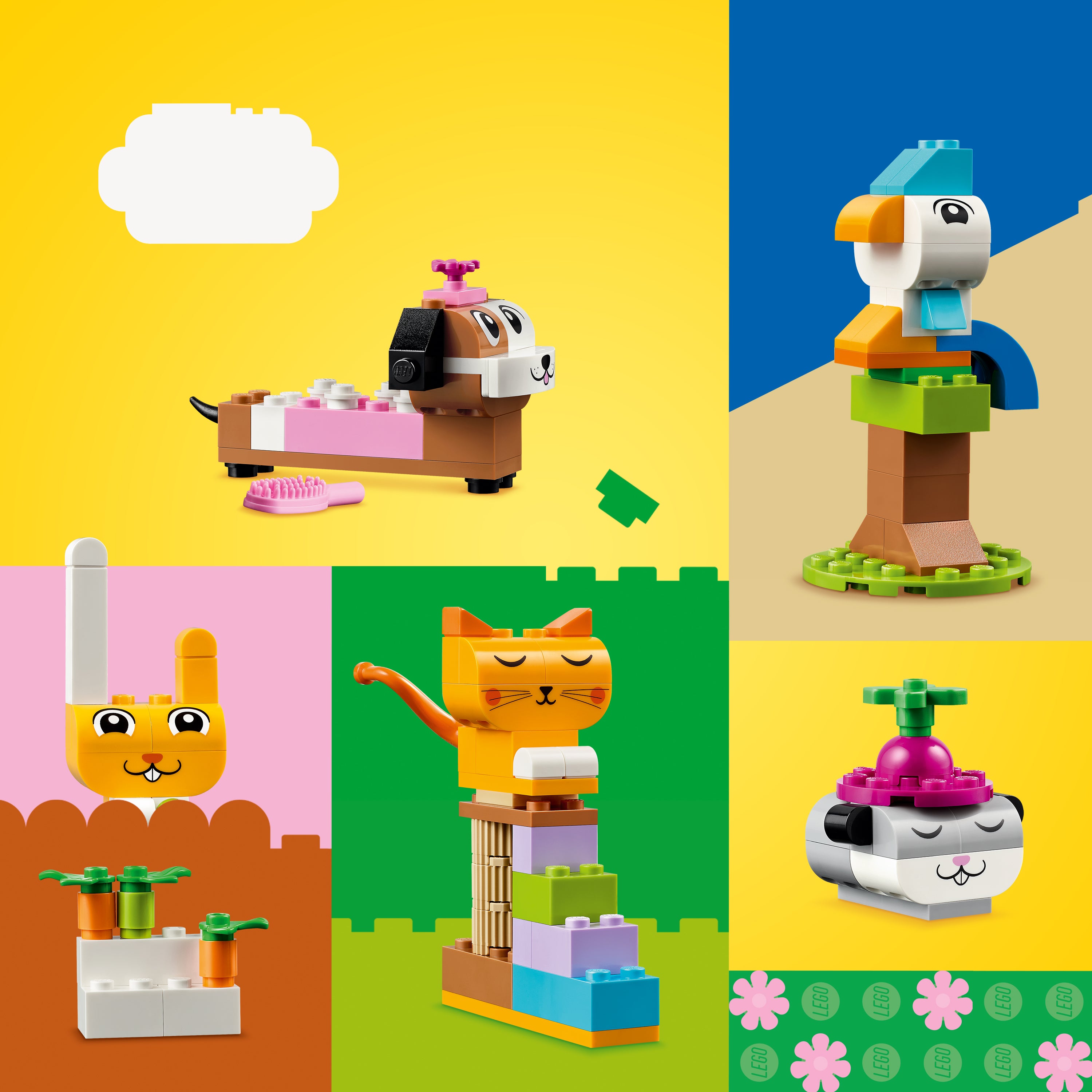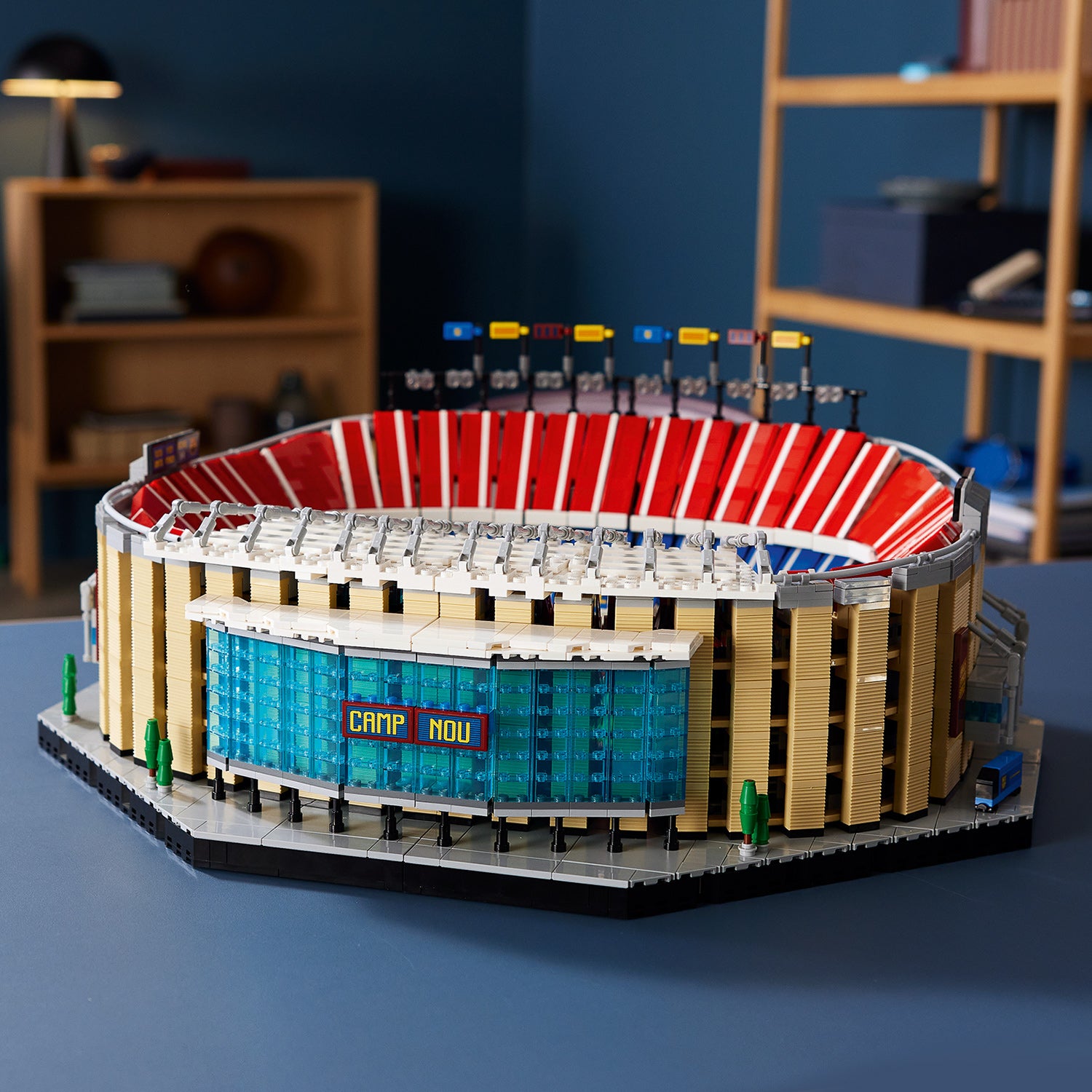The history of LEGO Technic
 TECHNIC, together with System, is one of the main lines of The LEGO Company.
TECHNIC, together with System, is one of the main lines of The LEGO Company.
It is based on creating detailed model machines and mechanical toys with specialized beams and connectors to make details more accurate and smooth. Designed primarily for children aged 9 and up, the theme was first introduced as the Expert Builder series in 1977, although in certain markets (such as the United Kingdom) they were marketed as engineering sets. The theme was renamed "TECHNIC" in 1984 and briefly introduced a new type of figure, the TECHNIC figure. Most Technic themes are now discontinued. A new type of contraction figure called Ultrabuild was released in 2013. Modern minifigures have never appeared in a TECHNIC set.
History
The TECHNIC theme is characterized by the presence of axles, gears, connector pins and many other parts rarely seen in typical LEGO System sets. TECHNIC is currently still an active theme and is one of the longest running themes in LEGO history.
Almost all TECHNIC sets are vehicles and thus use parts to simulate real vehicles, such as engine parts, suspension, pneumatic and transmission parts. Automated elements first appeared in 1990.
An example of a technical figure.
In recent years, system sets have begun to adopt previously TECHNIC-exclusive parts, particularly in the Exclusives and Star Wars sets. Many modern sets, including TECHNIC sets themselves, significantly blur the distinction between the two systems.
An example of an original TECHNIC set.
Mindstorms, a LEGO line of robotic products, uses a huge number of TECHNIC pieces, although it is sold as a separate product line. The next generation of the Mindstorms series, "Mindstorms NXT" (released August 2006), is based on TECHNIC's studless construction method.
The four TECHNIC basic components.
The main components in LEGO TECHNIC are listed below:
Beams - Beams are long blocks with rows of round holes. All beams are one stud wide, but they can be different lengths. They form the basic structure of the TECHNIC system. Before 2000, TECHNIC beams had studs like regular bricks, while modern sets have rounded edges and no studs (officially known as "studless construction").
Pegs - Pegs are small cylindrical pieces that lock into holes in beams. The two most common types of pegs are called connecting pegs, which connect two beams together. Black or blue connecting pins hold the two beams together rigidly, while gray or brown connecting pins form loose hinges. Pins have also been seen in system sets.
Axes - Axes, also called cross axles, are cross-shaped rods. They are usually used in rotating parts. When inserted into beam holes, they rotate freely. Like beams, axles are measured in stud lengths; axes with even lengths are colored black and axes with odd lengths are colored gray. There are some special axes that are colored differently.
Gears - Gears are flat cylinders with holes in the center; most have teeth around the edges. A large majority of gears fit snugly on axles. When used with rubber bands or strings, some gears can form pulleys. Most modern gears are one stud wide and have pin holes in them.
Other components
Rubber Bands - Rubber bands can be used in different ways in TECHNIC sets. They can be used for pulleys by connecting two pulley wheels together and can form treads if one loops a small rubber band around a single large wheel.
Pneumatic - This system mimics real-life pneumatic and/or hydraulic systems by using compressed air to move linear actuators.
Springs - Springs are used for shock absorbers and suspension.
String - String is used for cranes and winches.
Decoration - Decorative elements, such as stickers, are used to decorate a model or to label controls.
engines
Electric motors
TECHNIC has always had a huge variety of electric motors. Some are connected via built-in batteries, others use connected battery boxes and still others run primarily on electricity using a transformer. Most modern sets use batteries.
Early TECHNIC engines used the standard 4.5V system, interchangeable with the Trains theme and consisted of a large brick with a small protruding shaft. When the motor is activated, the shaft rotates. From 1990 this was changed to the 9V system in line with other LEGO themes. The output rotation has high speed but low torque, so it cannot be used to rotate heavy objects without additional gears. Later engines included a hole into which a shaft of any length could be inserted.
A new engine system was released in late 2007. It was called Power Functions and was first used in the 8275 Motorized Bulldozer set. The system consisted of a set of motors, two infrared receivers, a battery box and an infrared remote control. One receiver would connect to the battery box and the other would connect to the motors.
In 2018, Lego introduced the Powered Up motor system (known as CONTROL+ in Technic sets). This successor to Power Functions has hubs that connect to an app via Bluetooth to program and control the motors.
TECHNIC Figures
TECHNIC figures were a form of minifigures used in some TECHNIC sets ranging from mid-1986 to 2001. They mainly appear in the Arctic Action and Competition themes. TECHNIC figures were much larger than conventional minifigures and had more joints. These were similar to Belville Figures.
TECHNIC-based themes
Arctic action (discontinued)
Ben 10: Alien Force (Discontinued)
BIONICLE
Competition (Ended)
Dacta (Some sets)
Hero Factory (Discontinued)
Model team (Discontinued)
Racers (some sets)
-

Why motorcycle enthusiasts will love the new LEGO® Technic™ Yamaha MT-10 SP
READ MORE -
Iconic cars from LEGO
READ MORE -

Sort and store your LEGO® bricks
READ MORE -
Travel and history
READ MORE -

Art, design & music
READ MORE -

LEGO sets that take some time to build
READ MORE -
LEGO Modular Buildings
READ MORE -
The eight best LEGO® racing car sets for kids
READ MORE -

The most beautiful LEGO buildings
READ MORE
LATEST LEGO SETS
-
LEGO Knuckles' Guardian Mech 76996 Sonic
Regular price Dhs. 118.00 AEDRegular priceUnit price / perDhs. 143.00 AEDSale price Dhs. 118.00 AEDSale -
LEGO R2D2 75379 Star Wars
Regular price Dhs. 346.00 AEDRegular priceUnit price / perDhs. 407.00 AEDSale price Dhs. 346.00 AEDSale -
LEGO Viking Village 21343 Ideas
Regular price Dhs. 566.00 AEDRegular priceUnit price / per -
LEGO 76958 Dilophosaurus Ambush
Regular price Dhs. 110.00 AEDRegular priceUnit price / per
SELECTED FOR YOU
-
LEGO New York Skyline 21028 Architecture
Regular price Dhs. 179.00 AEDRegular priceUnit price / per -
LEGO Paris Postcard 40568 Creator
Regular price Dhs. 89.00 AEDRegular priceUnit price / per -
LEGO The LEGO® House 21037 Architecture
Regular price Dhs. 326.00 AEDRegular priceUnit price / perDhs. 0.00 AEDSale price Dhs. 326.00 AED -
LEGO The Flatiron Building 21023 Architecture
Regular price Dhs. 488.00 AEDRegular priceUnit price / per -
LEGO The London Skyline 21034 Architecture
Regular price Dhs. 159.00 AEDRegular priceUnit price / per -
LEGO The Trafalgar Square London 21045 Architecture
Regular price Dhs. 407.00 AEDRegular priceUnit price / per -
LEGO The White House 21054 Architecture
Regular price Dhs. 399.00 AEDRegular priceUnit price / per -
LEGO Paris with Eiffel Tower 21044 Architecture
Regular price Dhs. 199.00 AEDRegular priceUnit price / per -
LEGO The Singapore Skyline 21057 Architecture
Regular price Dhs. 209.00 AEDRegular priceUnit price / per -
LEGO Tokyo's Skyline 21051 Architecture
Regular price Dhs. 249.00 AEDRegular priceUnit price / per
-

LEGO Classic
Discover endless building fun with LEGO Classic sets! This collection offers a...
-

LEGO SuperMario
Bring your favorite characters to life with LEGO® Super Mario™. From starter...
-

LEGO Icons
Relive your childhood with LEGO Icons sets, specially designed for nostalgic adults....




















